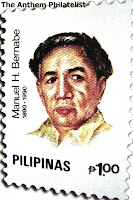The National Anthem of Reunion

Réunion, an island in the Indian Ocean, is a French overseas department. The official anthem, like all other French overseas departments, is the French anthem "La Marseillaise". However, there is a local song which is thought of by many Réunionese as their unofficial local anthem, "P'tit fler fanée".
The song dates to the 19th century, when songs on Réunion were mainly those which were brought over from Europe. The residents translated the songs into the local Creole spoken there and were then widely enjoyed in Réunion. The "Pétit fleur fanée" is an excellent example of such 19th century music in use on the island. The music was composed by Jules Fossy and the lyrics written by Georges Fourcade. The anthem is now taught in schools in Réunion, and most islanders are very familiar with the song.
Georges Fourcade is a singer and musician born in Saint-Denis in Reunion Island on 27 July 1884 and died on 29 December 1962.
Originally a trader, George Fourcade later became a tax collector. He decides to take up music theory with Julius Fossy as a teacher. The latter became his friend and composer of almost all of his repertoire.
In 1930, Georges Fourcade finally passes his entrance exam to the Society of Authors. He composed "P'tit fler fanée", a piece that become hugely popular and one of the most successful songs of Reunion.
He plays the guitar, writing song lyrics and made recordings, including The Bard Creole. He became prominent in literature and theater with the publication in 1928 of the Z'histoires Caze and with plays Z'affaire coconut and Auguste Coq.
Jules Fossy is a French musician and composer born in 1879 in Saint-Denis in Reunion. With Georges Fourcadea, he composed the "P'tit fler fanée", among the best known of the music of Reunion.
The life of Julius Fossy is known to us by a autobiography he wrote in 1948, and in which he stated that his only passion is music, "hating political " one. According to him, he was initiated into this art by a brother named Isaiah, who taught him the rudiments of music from the years 1895 to 1897. It was apparently a measure of success for the young student at eighteen years to have gotten the Award of Excellence at a music school at Saint-Denis, the chief town of the colony, under scholarship.
During his days in military service at Diego Suarezin Madagascar, Jules Fossy was the bandmaster. Also, when he returned in 1904, he was summoned to take part in the orchestras of troops from theater, which then led him once in 1911, playing in sessions of silent cinema, which had just appeared on the Island. He sang different tunes in the sequence, to stir the emotion of the spectators. Love scenes were accompanied by waltzes, prosecution of polkas and brawls of Segaone.
According to David Christopher and Bernadette Ladauge, authors of a book on the music of Reunion in the 19th century, Jules Fossy then took part in the First World War and returned in 1919. While the island was ravaged by the Spanish flu, he was called to be part of the Philharmonic Society as a clarinetist, under the direction of Mr. Jacob Cordemoy. He became, after 1925, under the entailed estate of Jean Chatel, the leader of the band Municipal Saint-Denis. He led large parties and dances popular in the municipality for many years, retaining his position until 1940, when he was put into retirement.
Meanwhile, Julius Fossy had found his own musical training, The Creole Group. In addition, he was also joined in the 1920s, the collaborator Georges Fourcade, the artist he described in his autobiography as "a talented man [with] the rare gift of singing beautifully, accompanied by his valuable and inseparable guitar.
The miniature sheet above features the score of "La Marseillaise" issued by Nicaragua during PhilexFrance Exhibition.






